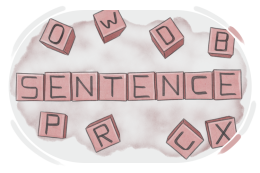Sentences in English Grammar
Sentences are groups of words that express a complete thought. They start with a capital letter and end with a punctuation mark like a period or question mark.
Sentences with LanGeek
Understanding sentence structure is crucial for mastering English grammar, and LanGeek is here to guide you through it. Whether you’re at the intermediate or advanced level, our comprehensive lessons will help you communicate more effectively and confidently.
What Are Sentences?
A sentence is a complete thought made up of a subject and predicate, along with other components like objects, complements, and modifiers. Mastering sentence structure is essential for clear and accurate communication in English.
LanGeek's Sentence Structure Lessons
LanGeek offers 24 lessons across beginner, intermediate, and advanced levels, covering essential topics like:
Simple Sentences
Compound Sentences
Word Order
Negation
Questions
Tags
... and more.
Each lesson provides clear explanations and practical examples, ensuring that you can build on your knowledge step by step.
Integration with LanGeek's Other Features
Our sentence structure lessons are integrated with LanGeek's other learning tools:
Vocabulary: Learn new words as you build sentences.
Reading: Improve your reading comprehension with diverse sentence structures.
Pronunciation: Practice the rhythm and stress patterns linked to sentence construction.
Start Learning Today
Join LanGeek and take your English skills to the next level. With comprehensive lessons, real-world examples, and integration with other learning tools, you will gain a deeper understanding of sentence structure. Start your learning journey now and master English with LanGeek!



